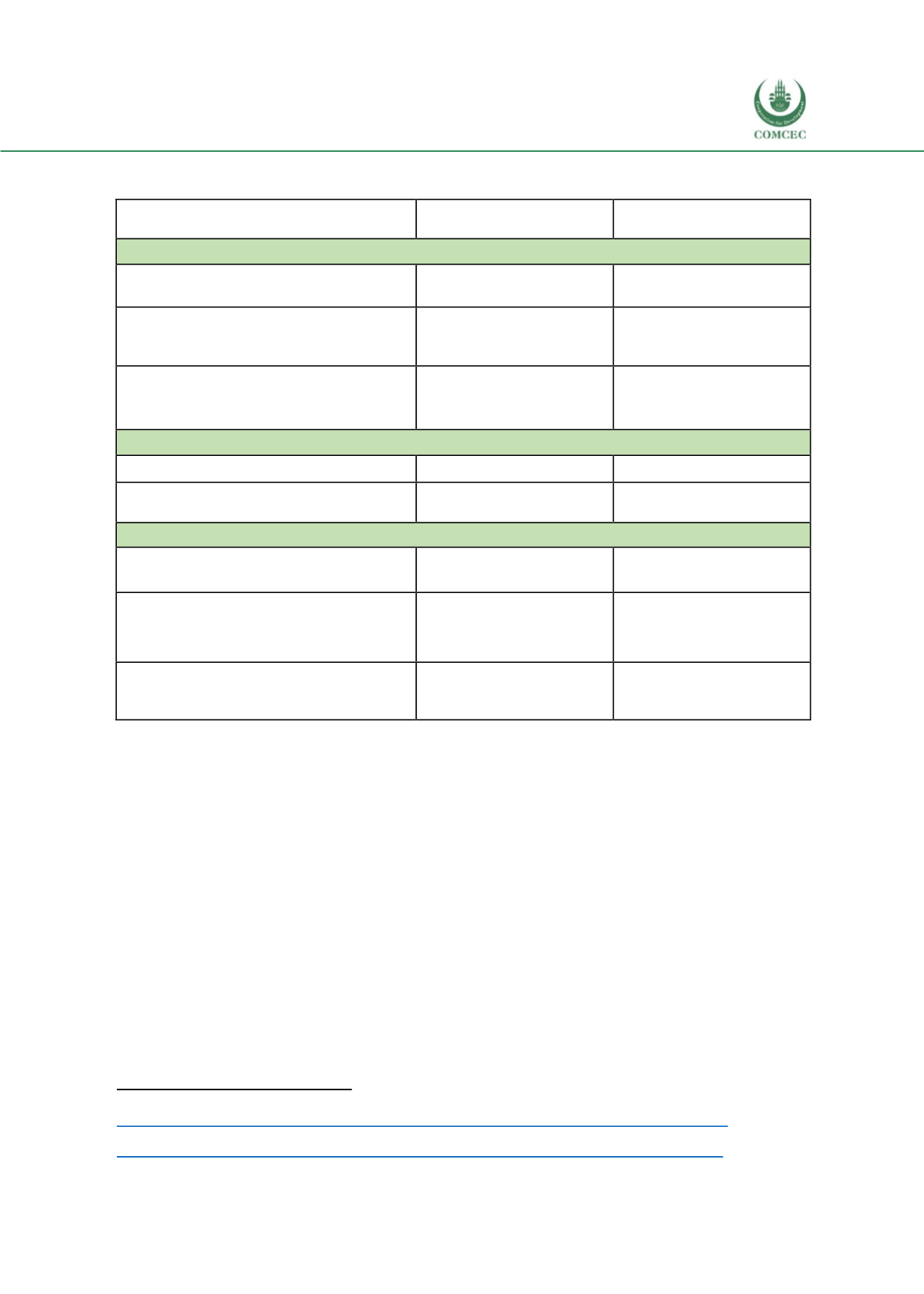

Increasing the Resilience of the Food Systems
In Islamic States in Face of Future Food Crises
97
Table 49: Indonesia - Summary Metrics
Source: EIU Food Security Index
Food Insecurity and Crises in Indonesia
The Indonesian economic crisis of 1997-1998, precipitated by a severe depreciation of the
Rupiah and high inflation rates of 77.63%,
402
caused a decline in purchasing power from the
high inflation rate and led many to experience food shortages.
Several studies showed that protein consumption several years after the crisis (in 1999 and
2002)was lower than before the 1996 crisis, according to National Socio-Economic Survey data
(SUSENAS).
403
In addition, macroeconomic policies that overshot exchange rates hindered
competitiveness in the agriculture sector. The application of a high interest rates policy toattract
foreign capital inflows reduced profitability and the comparative advantage of the agriculture
sector. Tariff policies also weakened domestic agriculture sectors.
After the crisis, the Indonesian government sought assistance from the International Monetary
Fund (IMF). The IMF programbeganwith the signing of the first Letter of Intent (L oI) at the end
402
“Inflasi Sempat Melambung Hingga 77% pada 1998.” Katadata. May 21, 2018.
https://databoks.katadata.co.id/datapublish/2018/05/21/inflasi-sempat-melambung-hingga-77-pada-1998403
Jayawinata, Ardi. “Dampak KejibakanMakroekonomi Terhadap Ketahanan Pangan Nasional.” 2005.
https://repository.ipb.ac.id/bitstream/handle/123456789/40944/2005aja.pdf?sequence=12&isAllowed=yMetrics
Indonesian
Performance
Global Average
Availability
Average food supply (kcal/ capita/day)
2,777
2,866
Volatility of agricultural production
(standard deviation of growth in
production over last 20 years)
0.1
0.1
Food loss (ratio of post-harvest/pre-
consumer losses to total supply)
5.8
5.6
Access
GDP per capita ($ at PPP)
$12,440
$22,024
Food consumption as a share of
household expenditure (%)
32.8%
29.5%
Utilization
Diet diversification (share of non-
starchy foods in dietary consumption)
31
52.5
Protein quality (composite score based
on the extent of the presence of nine
amino acids, assessed out of 100)
39.3
58
Access to potable water (% of the
population with access to basic drinking
water)
89.5
86
















